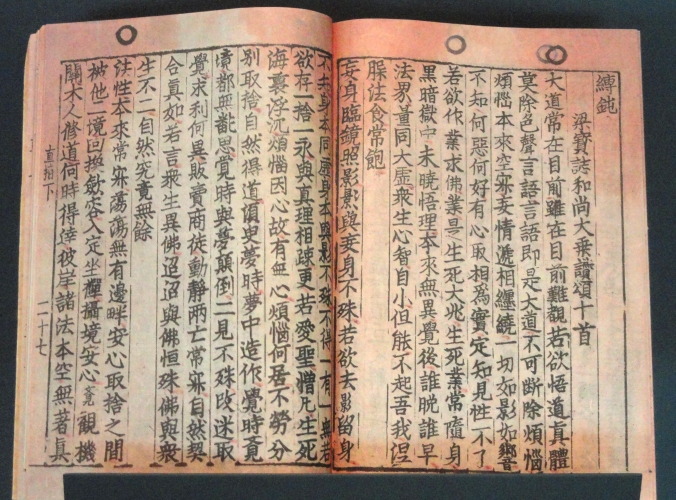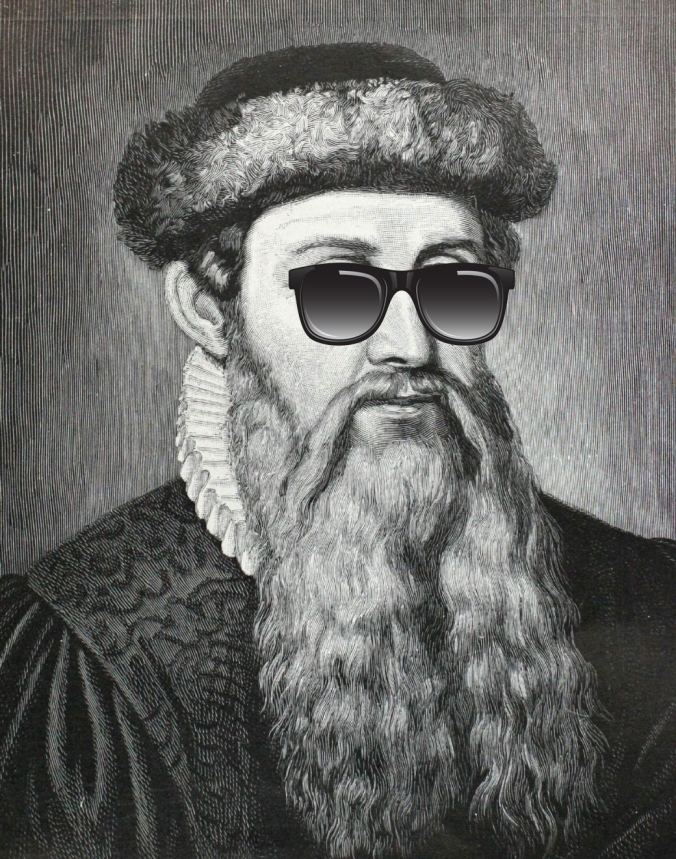Johannes Gutenberg is often credited as the inventor of the printing press. Many people think of him in that regard to this day. The reality is that Gutenberg didn’t exactly invent anything. His contributions to printing technology; namely his advancements in moveable, mechanized type, were indeed revolutionary, but the history of printing, and the printing press, begin about 600 years before Gutenberg’s time in Asia.
The true origins of printing begin with what historians refer to as woodblocks, a system in which printers would carve an image or letters into flat pieces of wood, ink the images, and then press them against cloth and paper to transfer. The earliest known woodblock printed book originated in China. Diamond Sutra (pictured below) was printed in 868 and is currently kept at the British Library in London. Woodblock printing was also utilized in Japan and Korea as early as the 8th century. The use of metal blocks was also not uncommon.

The onset of the 11th century marked a very important improvement to this method of printing; moveable type. Moveable type was developed by a Chinese man named Bi Sheng. Shen Kuo, a scholar who documented the work of Sheng mentions that his method of printing was actually fairly efficient in that day and age, and could print thousands of copies. The issue here, and why Sheng is not as prominently recognized as Gutenberg is for his advancements in moveable type, is that his method of printing didn’t become popular for centuries after his development.
One of the most notable examples of Chinese moveable type can be seen in a work printed in the 14th century by Wang Chen. His book on agriculture, “Nung Shu,” was originally printed in 1313 using the woodblock method, but was later reproduced using moveable type. Historians suggest that moveable metal type was independently discovered in Korea during the same century. In 1377, Baegun, a buddhist monk, printed a compilation of buddhist ideologies using moveable metal type. “Jikji” (Pictured below) is recognized as the oldest book in the world that was printed using metal type.

Whether or not Gutenberg was aware of Wang’s and Baegun’s advancements in moveable type is not exactly known, and up for debate. What is clear, is why the technology was so much more widespread in European countries as opposed to the Asian ones where it was first developed. The number of characters in Asian Languages is far greater, and the characters themselves are more ornate and detailed. With western languages, you’d need to cast only a few dozen pieces and you’d have the entire alphabet.
The reason that Gutenberg is “the man” (pictured below) when it comes to the origins of printing, is because he developed the press that mechanized the whole process. The first printing press, with its assembly line style printing process, allowed for far greater efficiency than simply pressing by hand as his Asian predecessors had done.

References:
Palermo, Elizabeth. “Who Invented the Printing Press?” Live Science. N.p., 25 Feb. 2014. Web. 28 Sept. 2016.